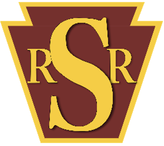Education - Part 5A
Motive Power
This section is devoted to a discussion of powered railroad cars that are called locomotives. We begin with the basic idea of tractive effort, treat classification topics, review the basics of steam, diesel-electric and electric locomotives and conclude with recent and possible future developments in motive power. Along the way, we will mention locomotive manufacturers, famous locomotives and related topics. We conclude this section with a discussion of model railroad motive power as expressed on the Shannondell Model Railroad.

